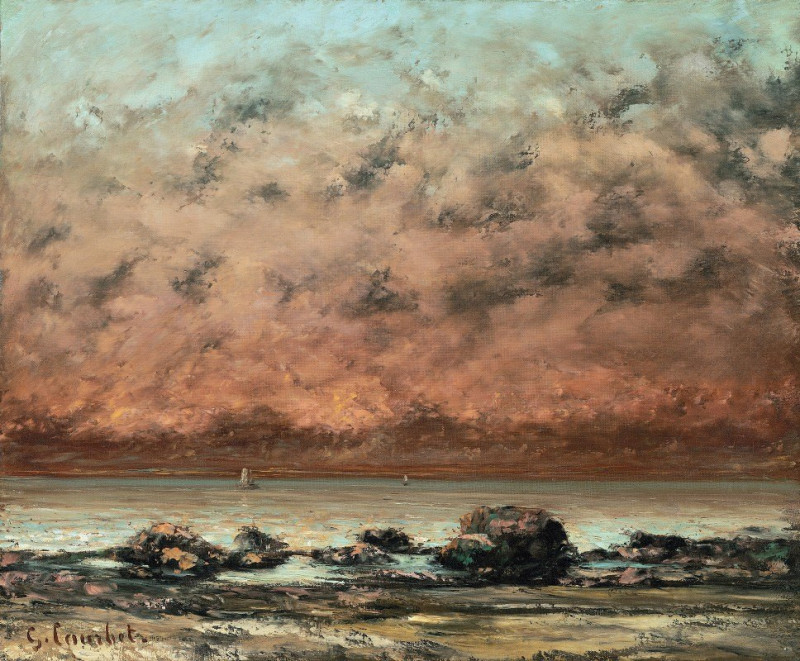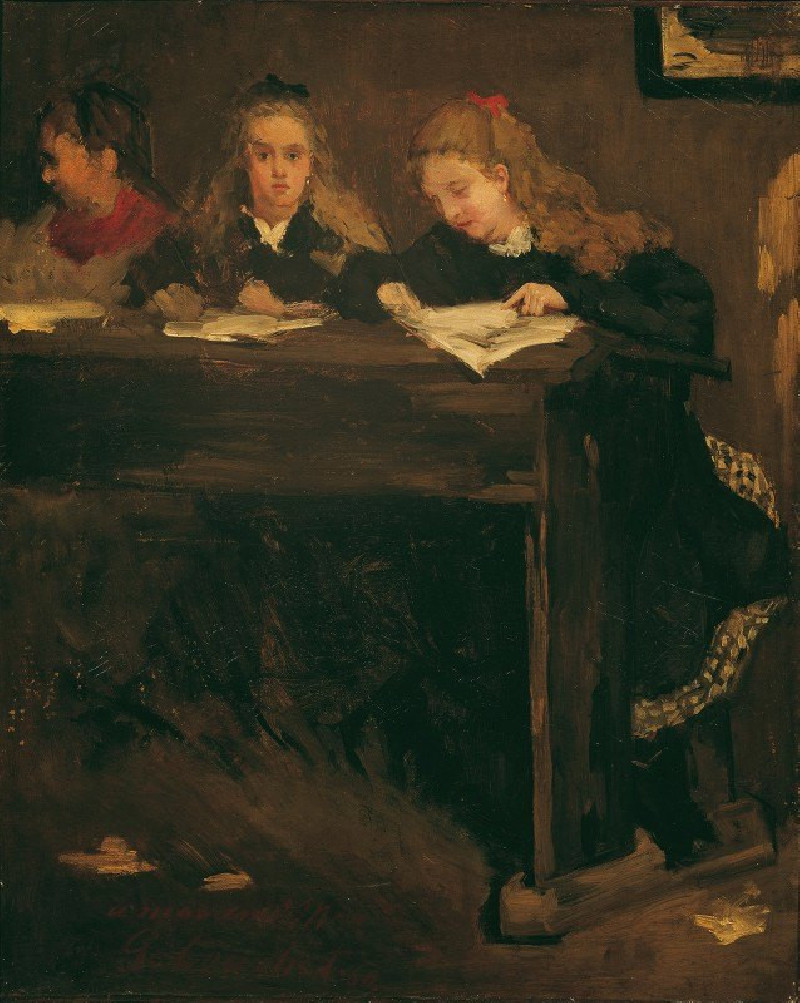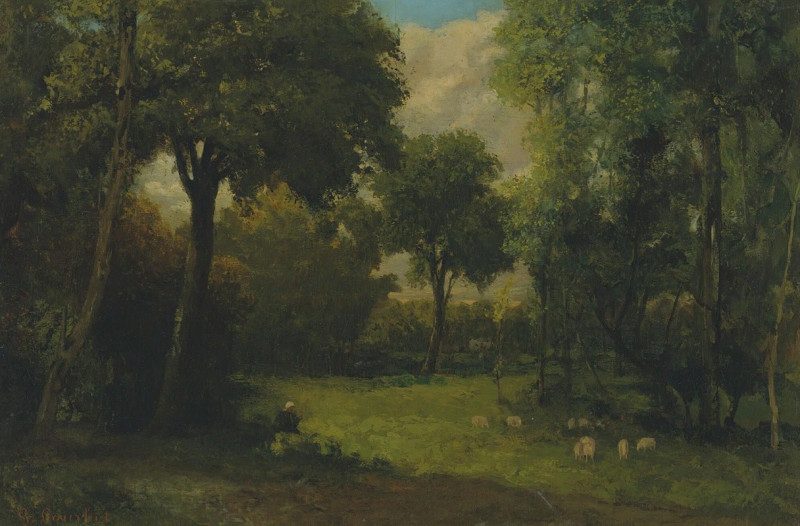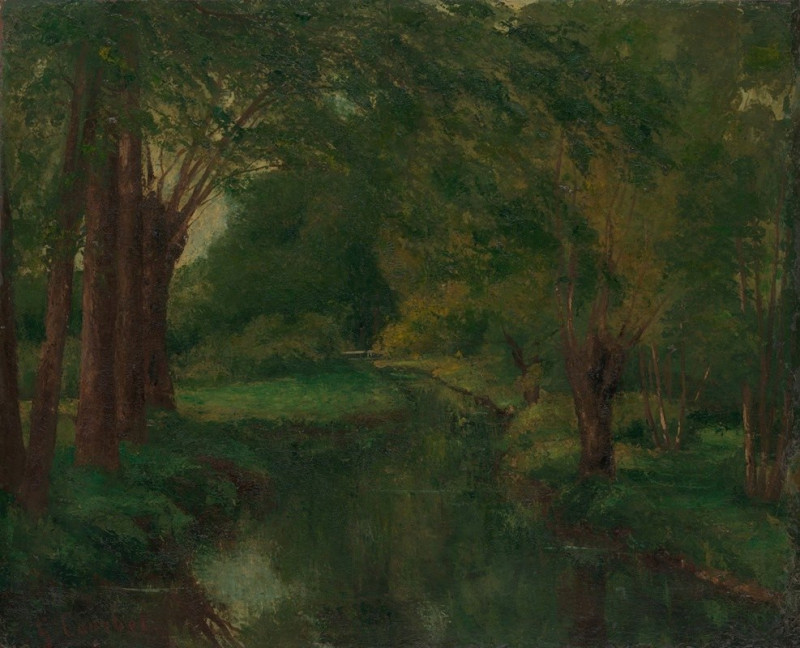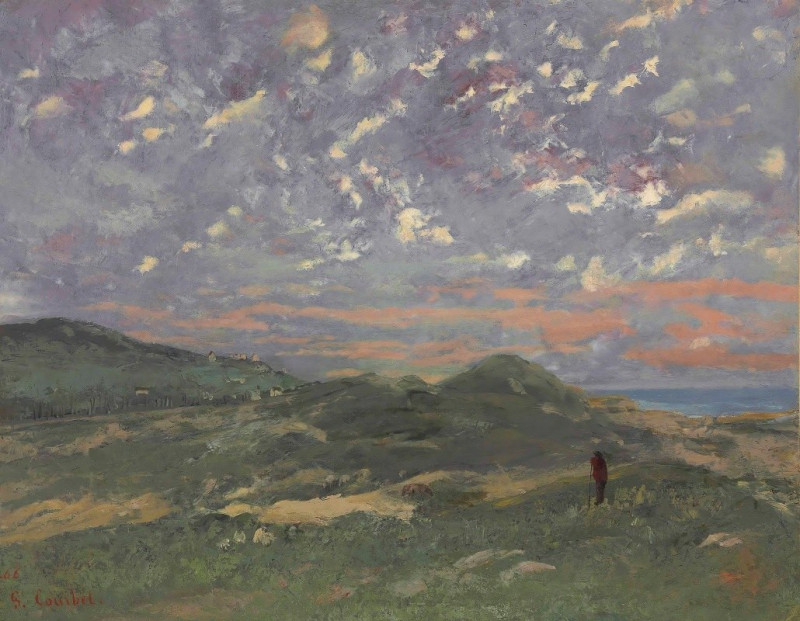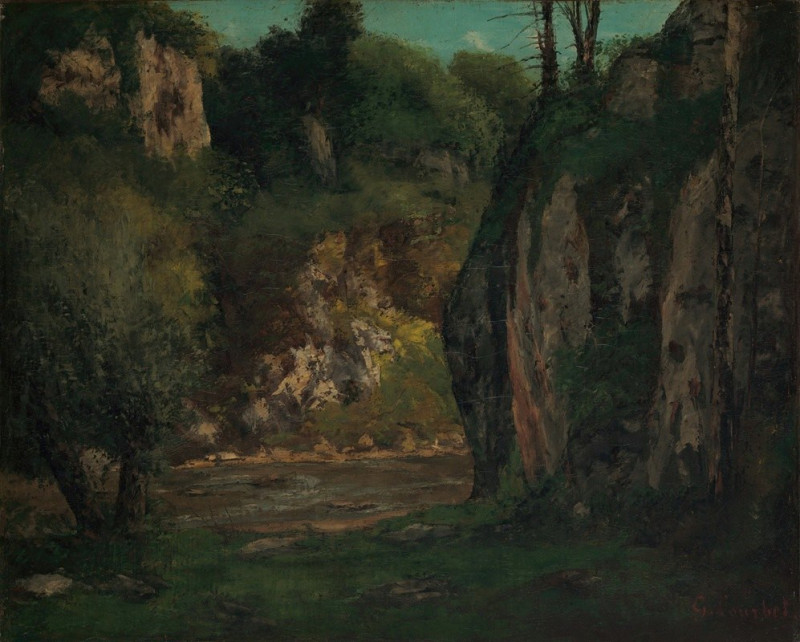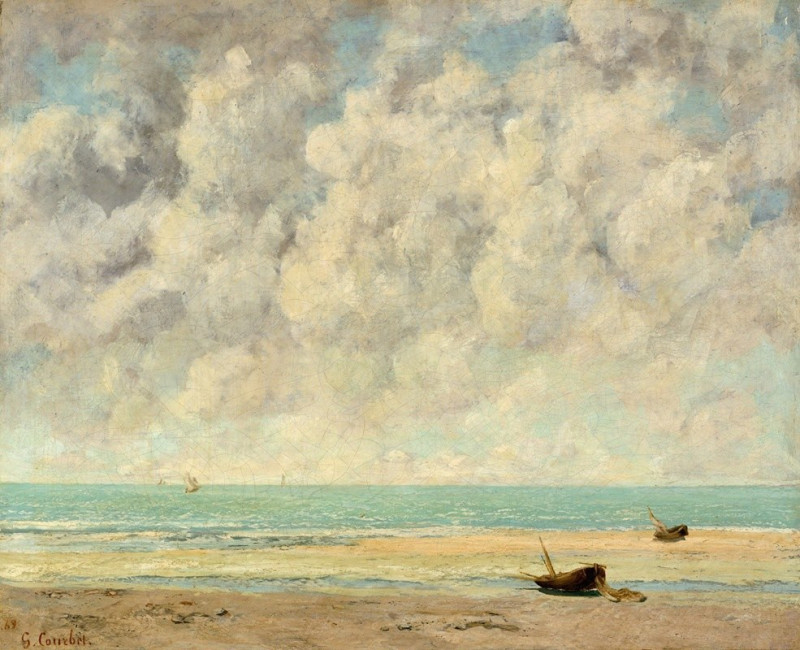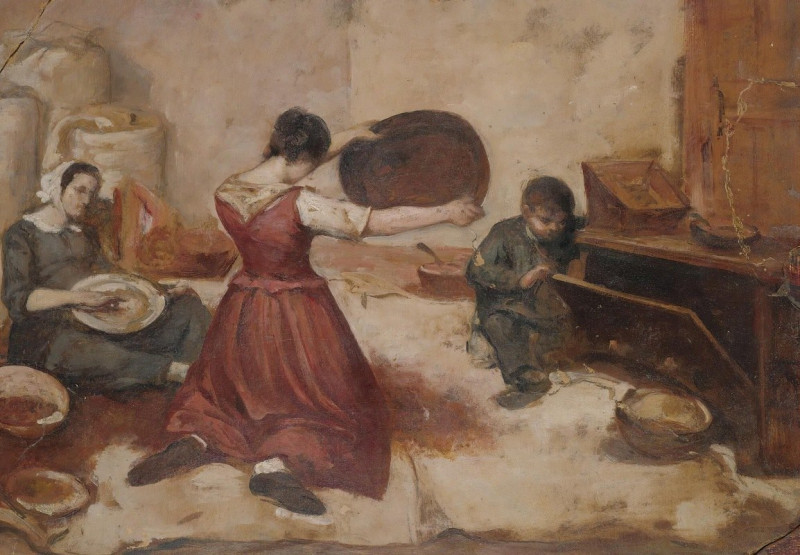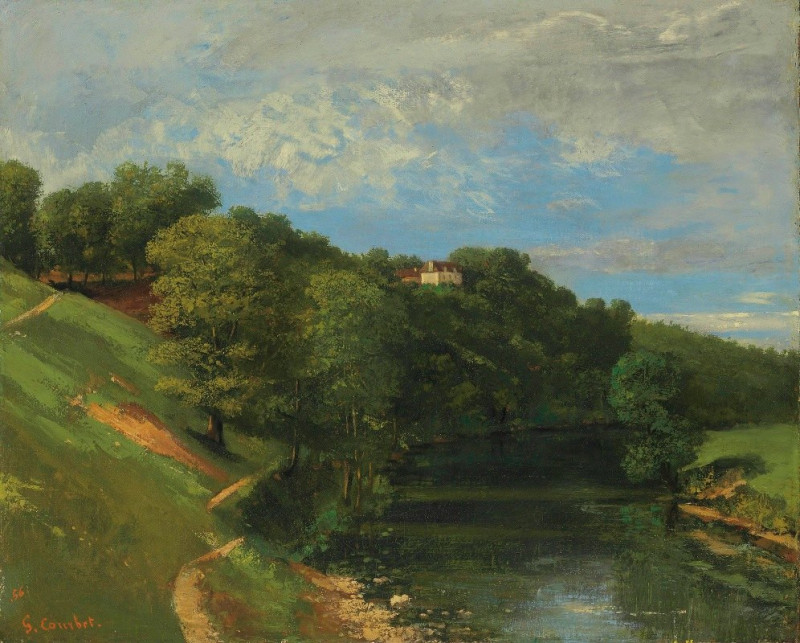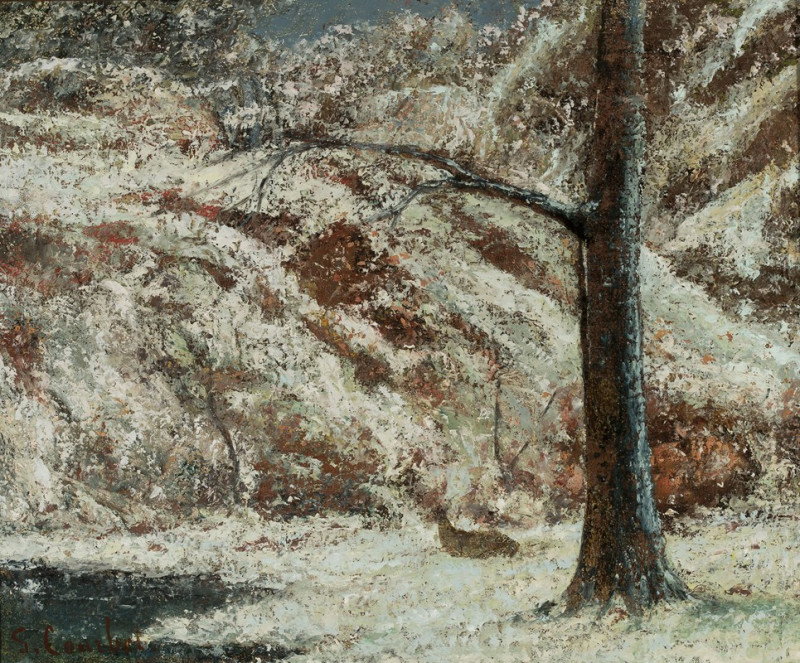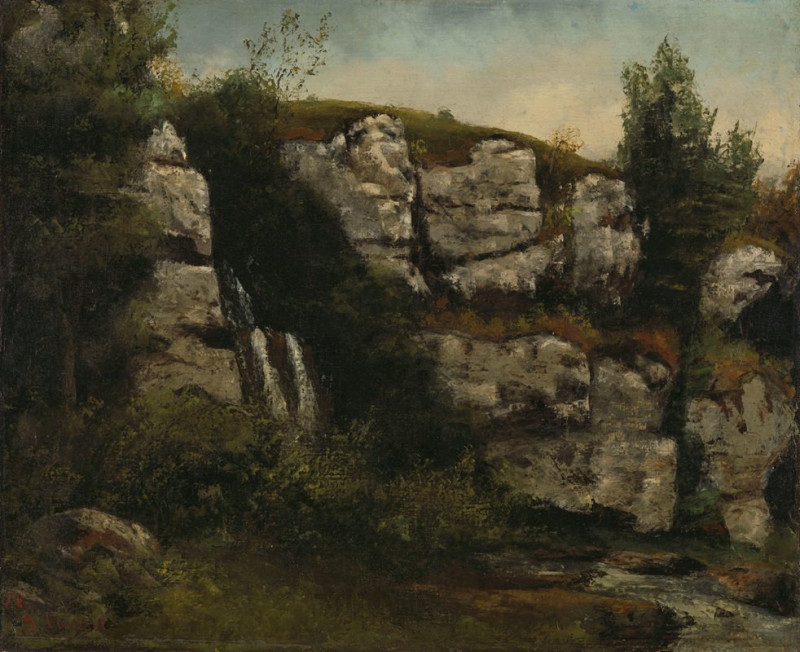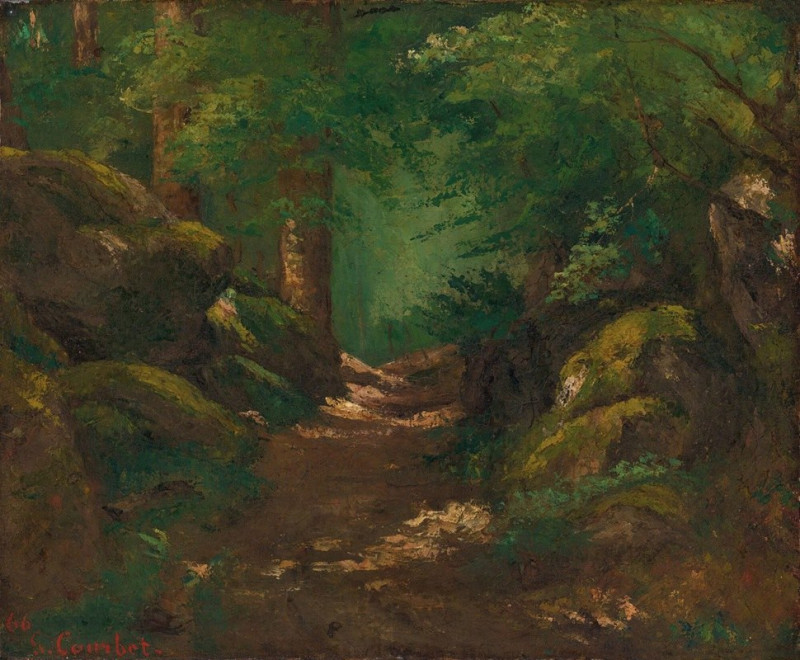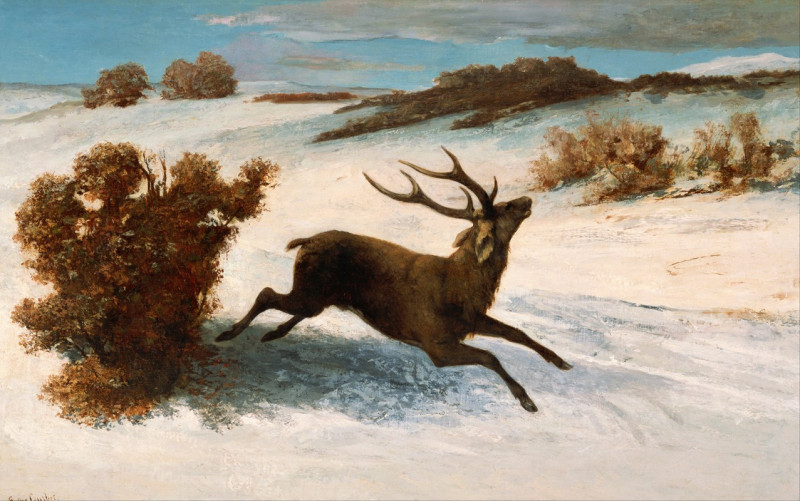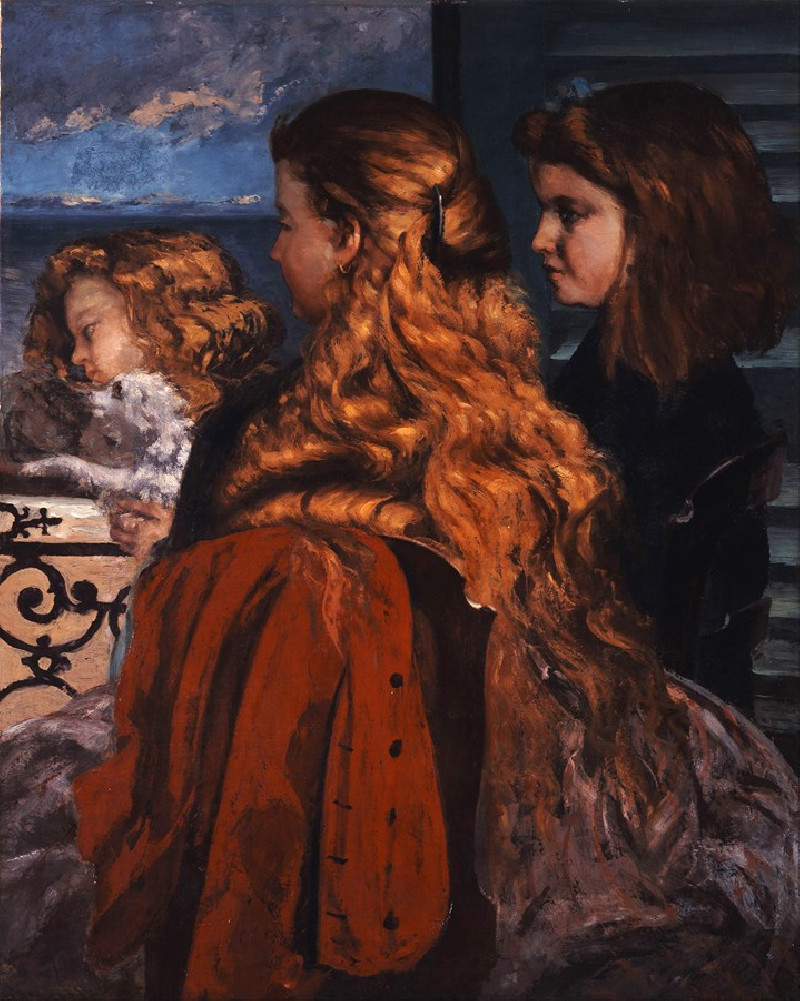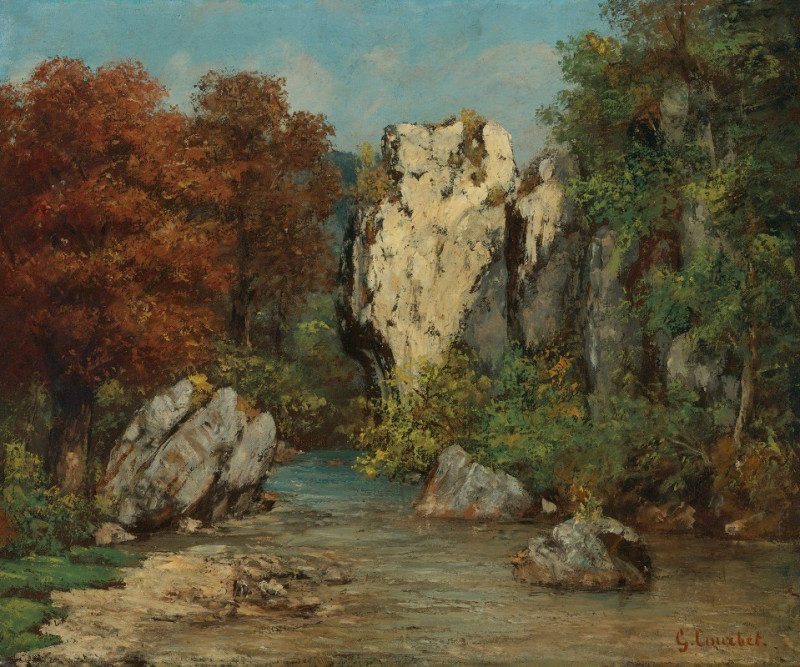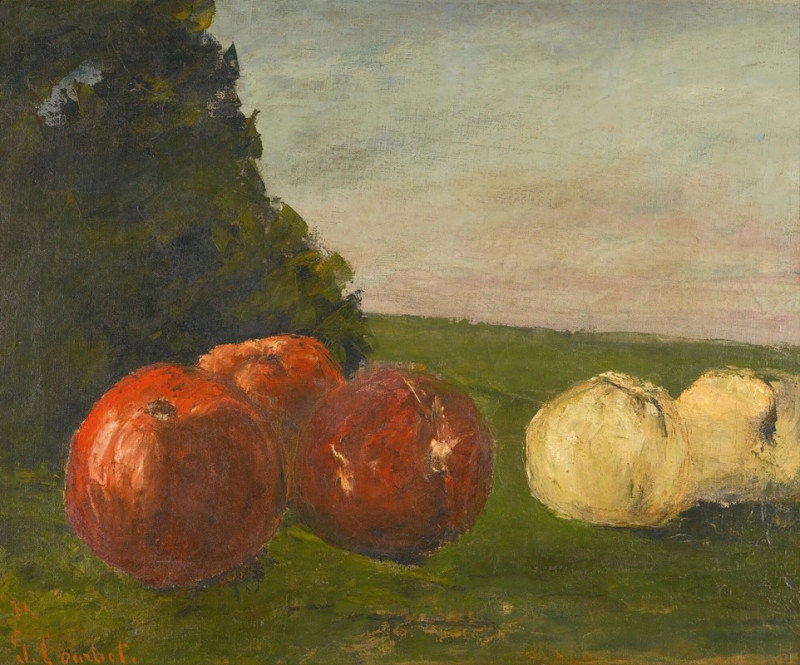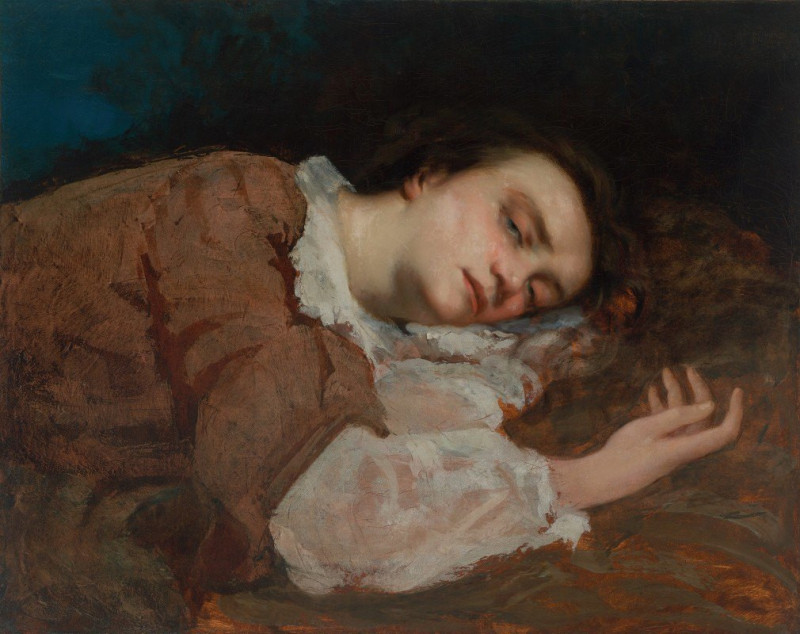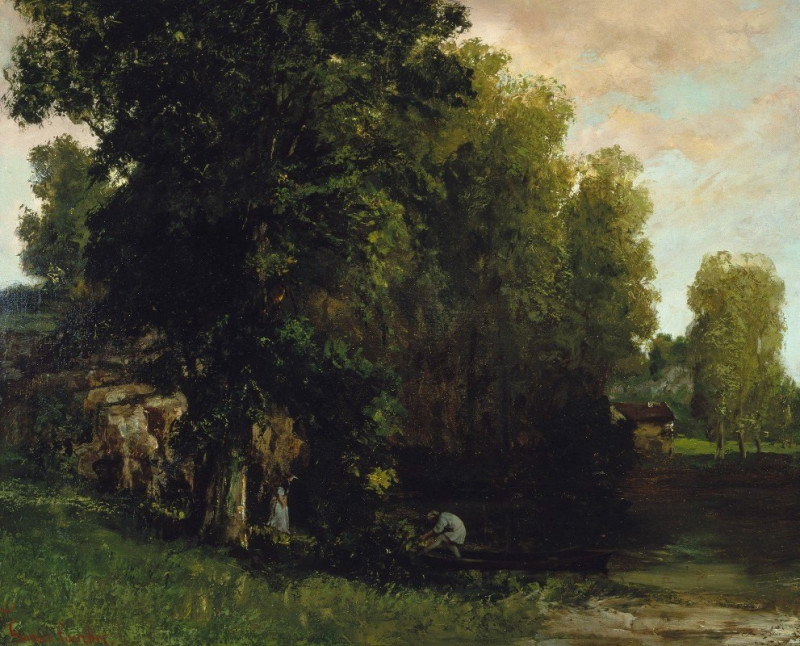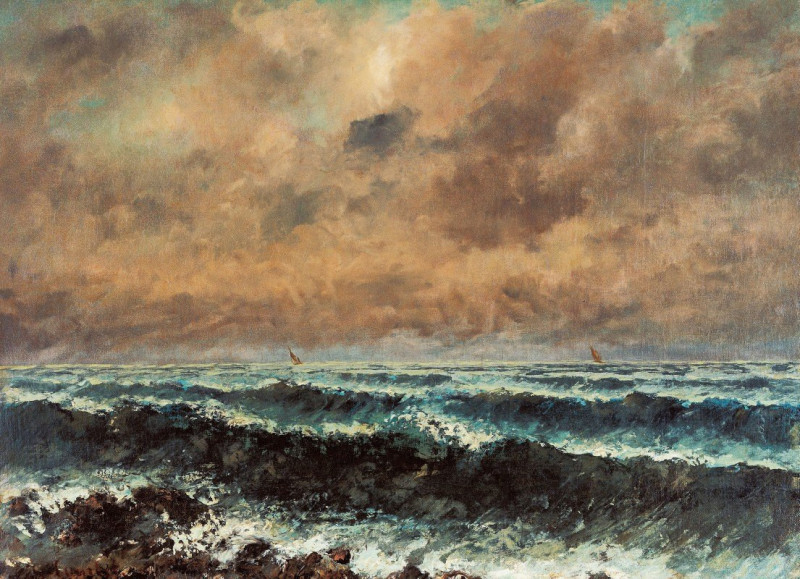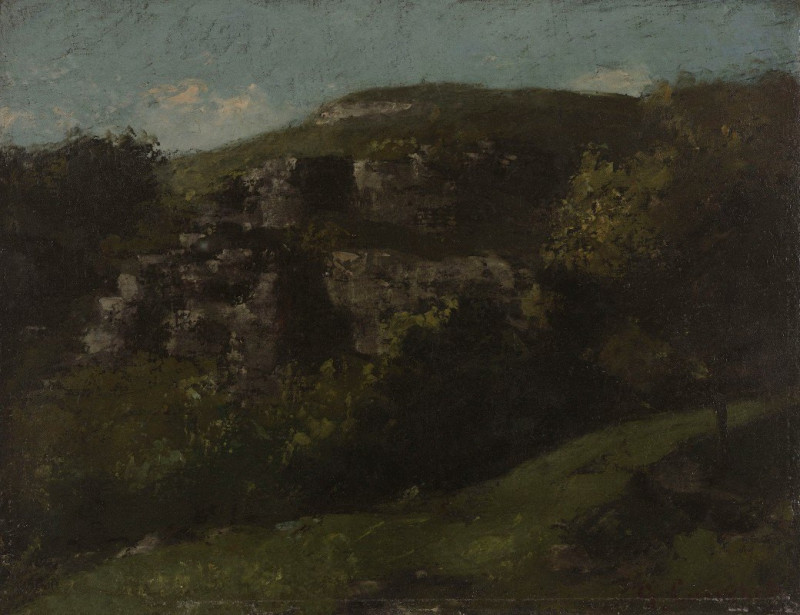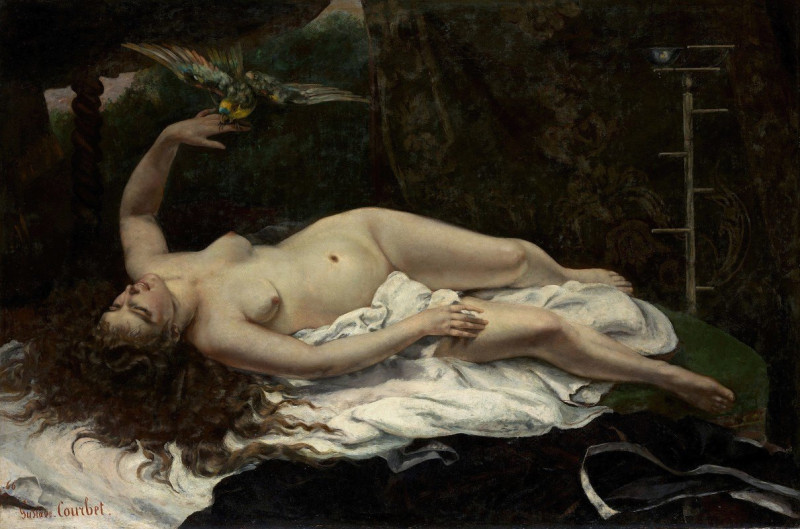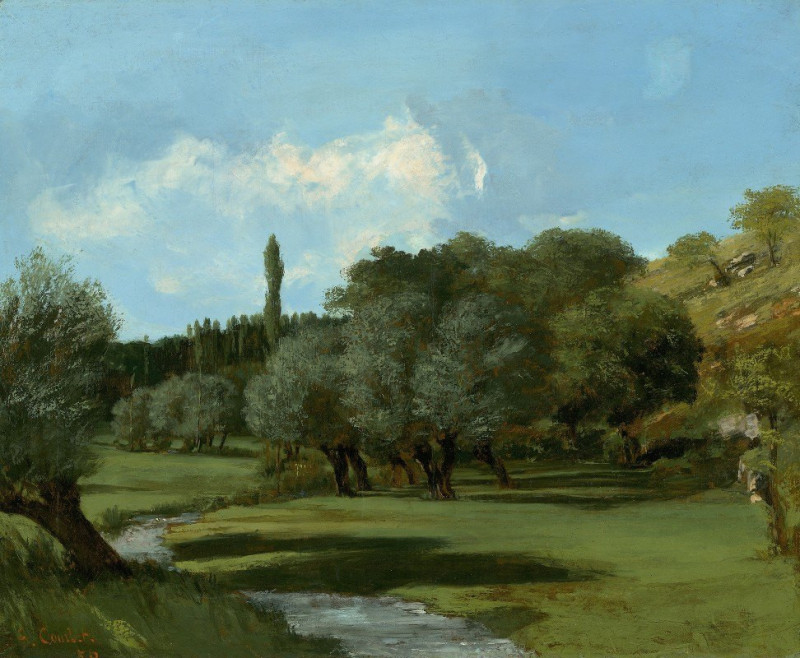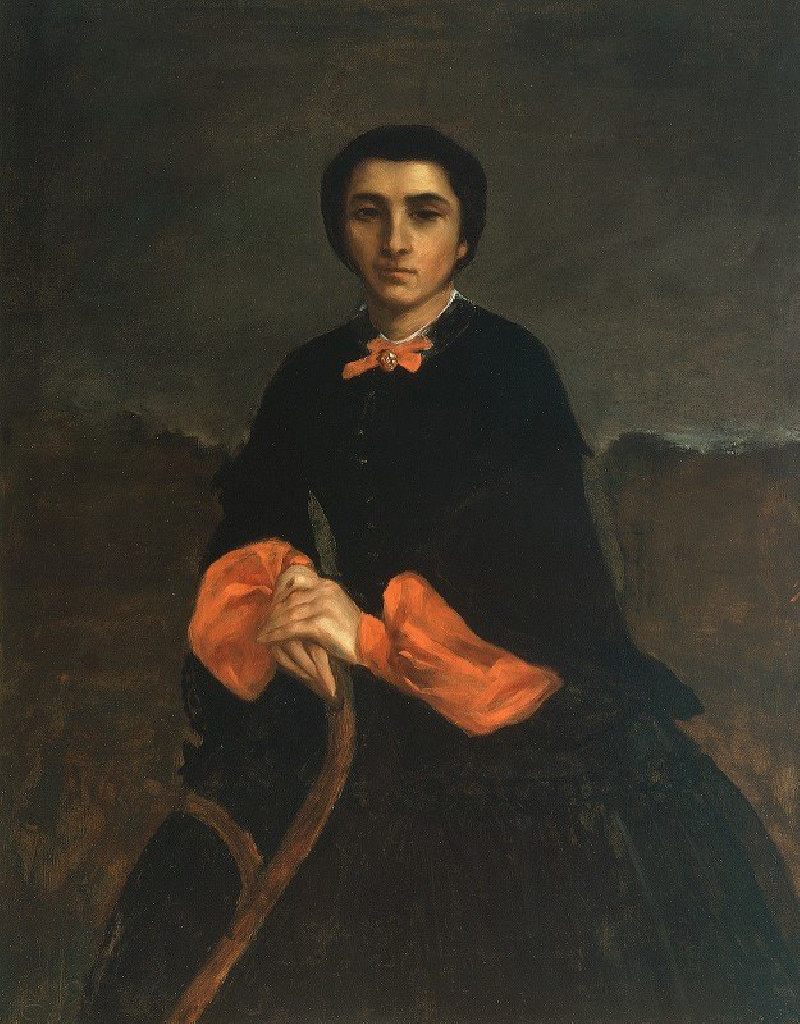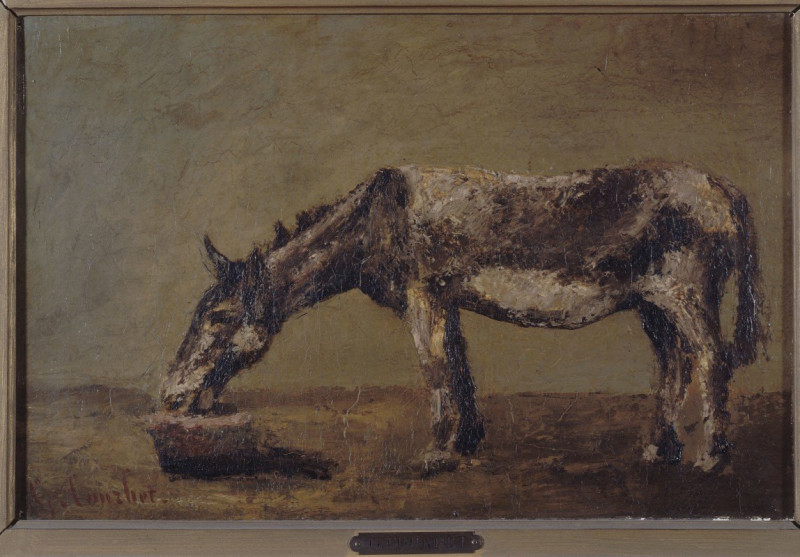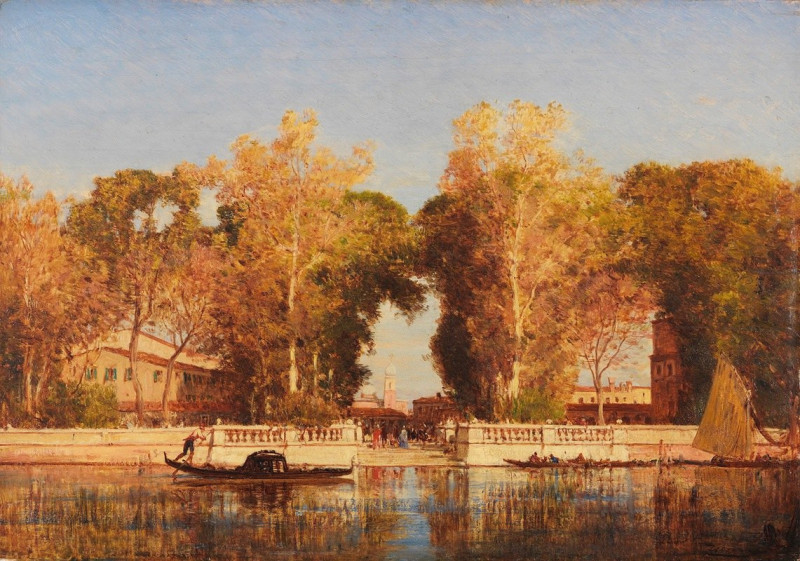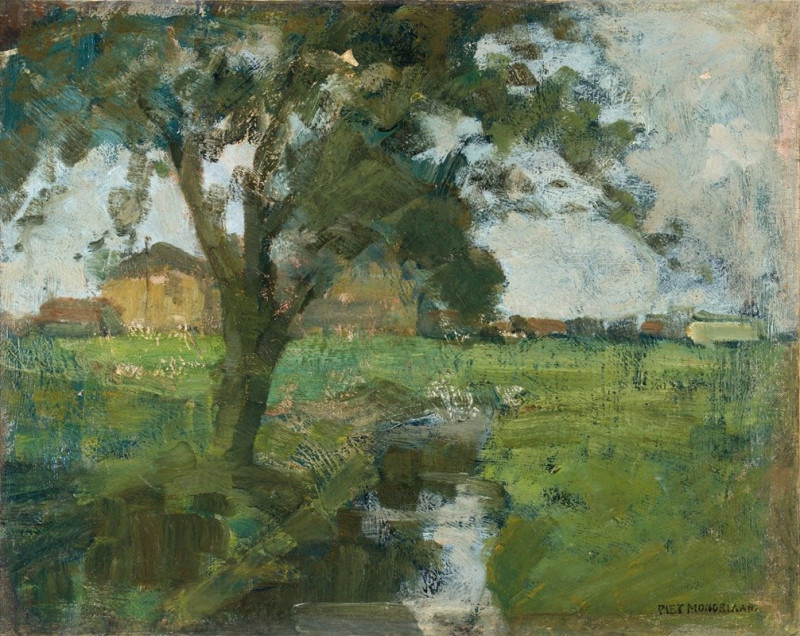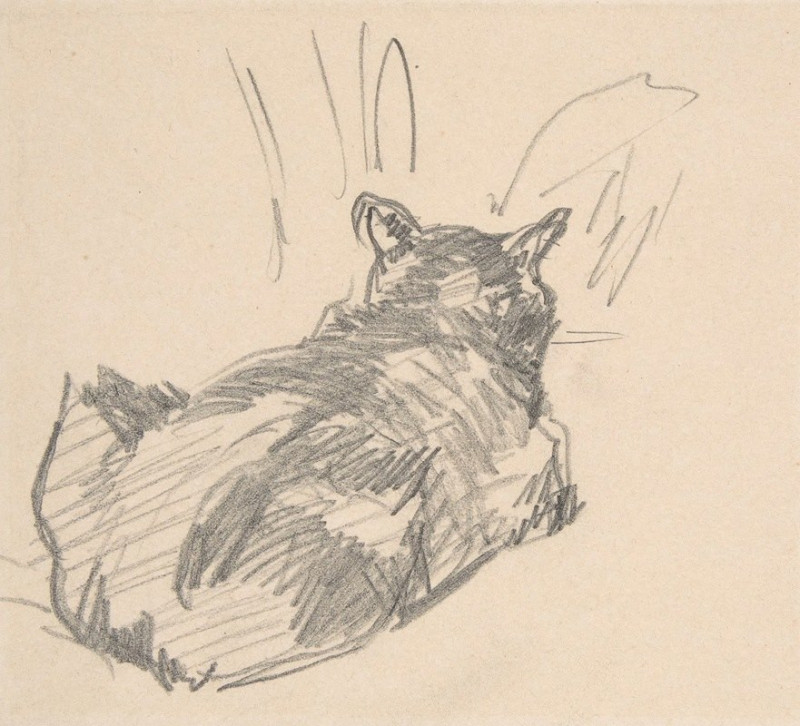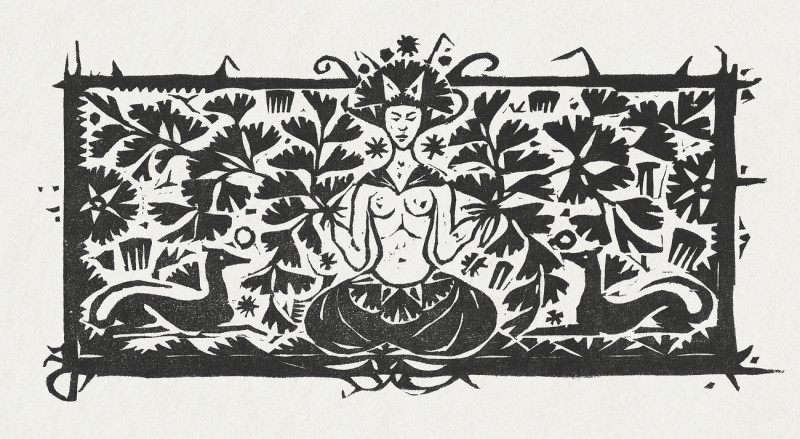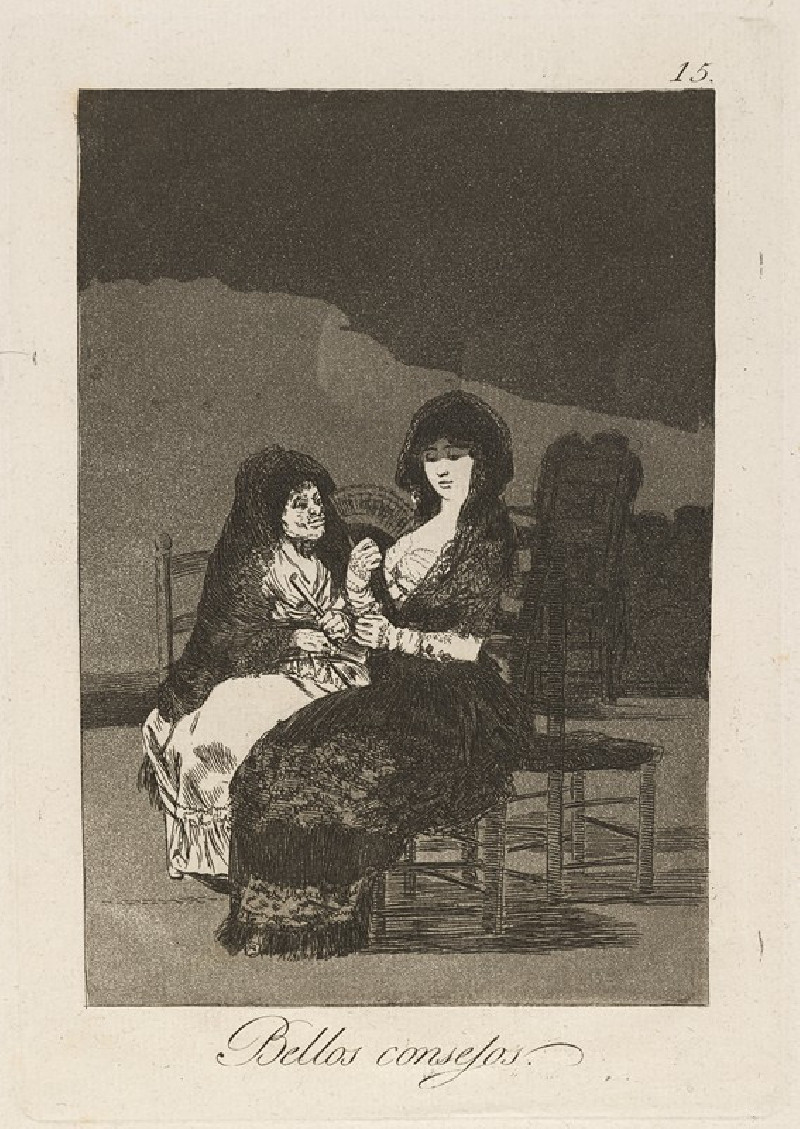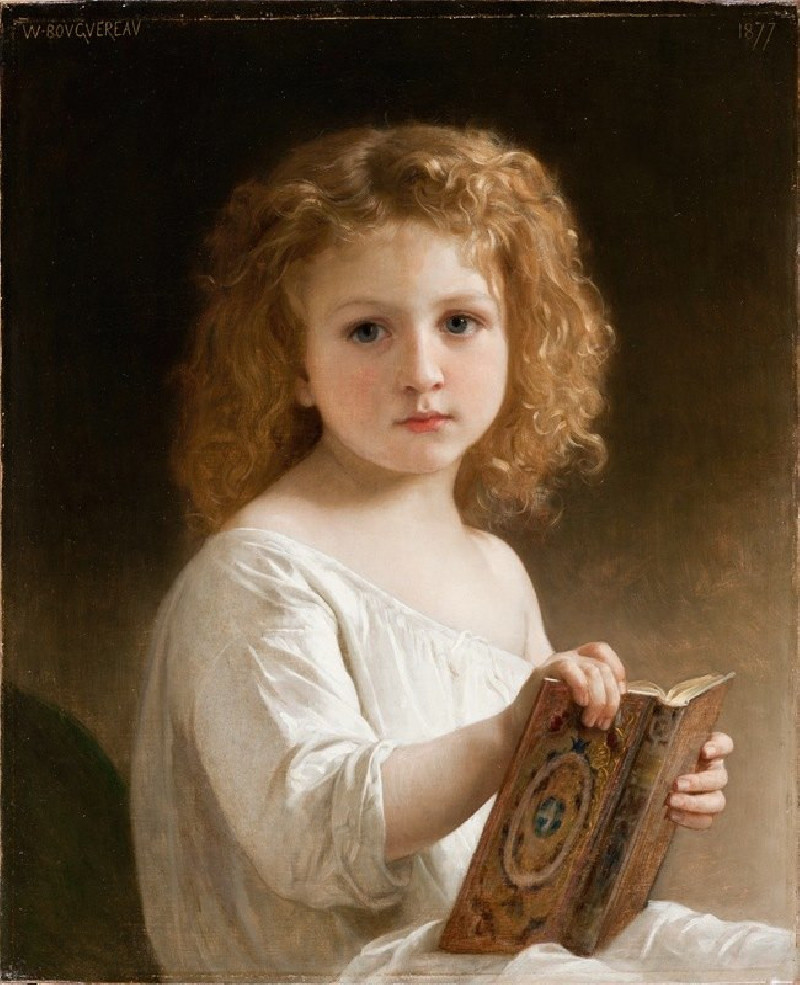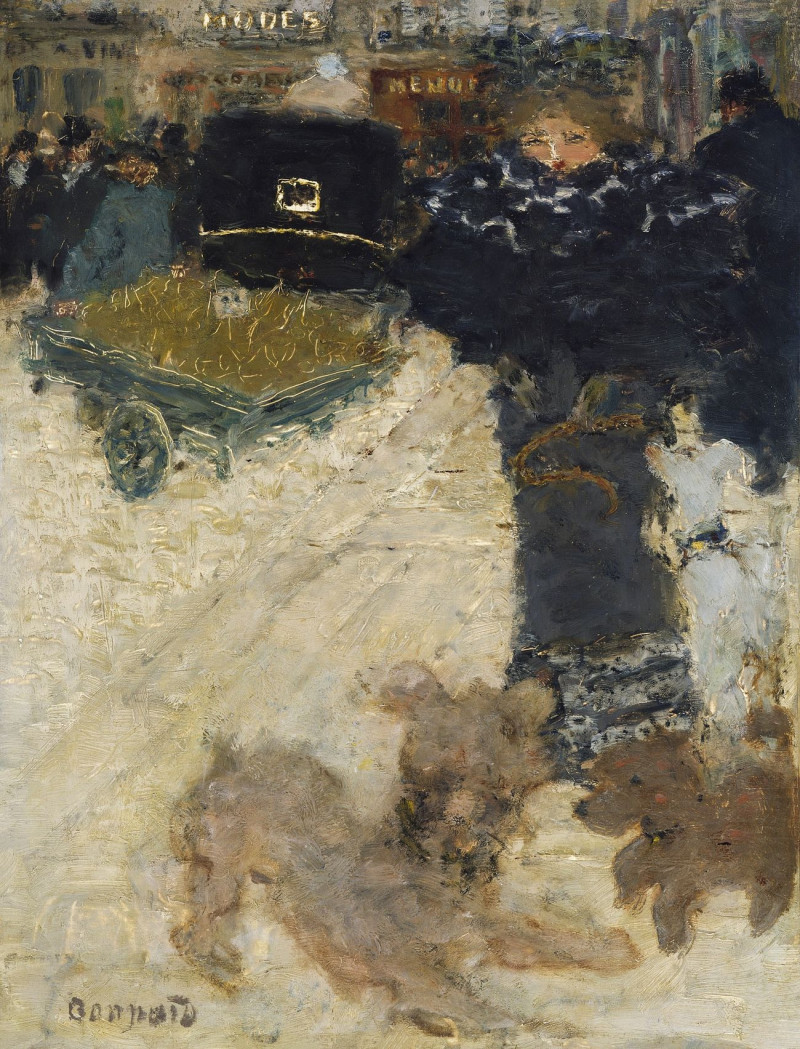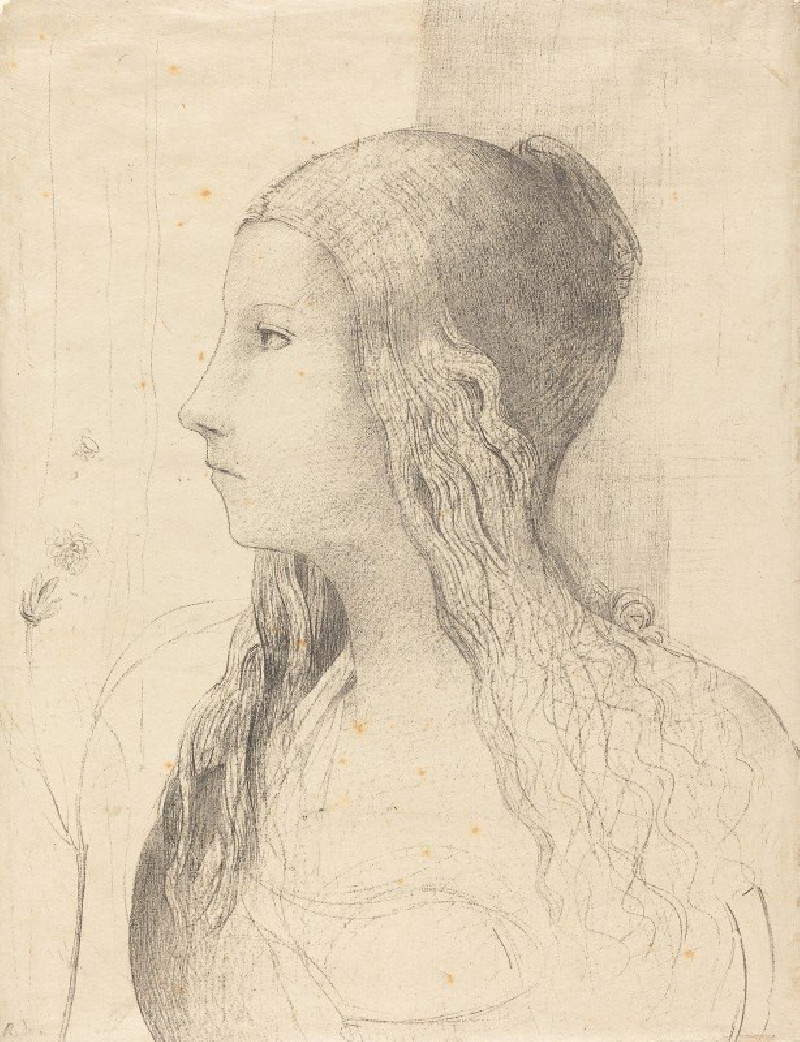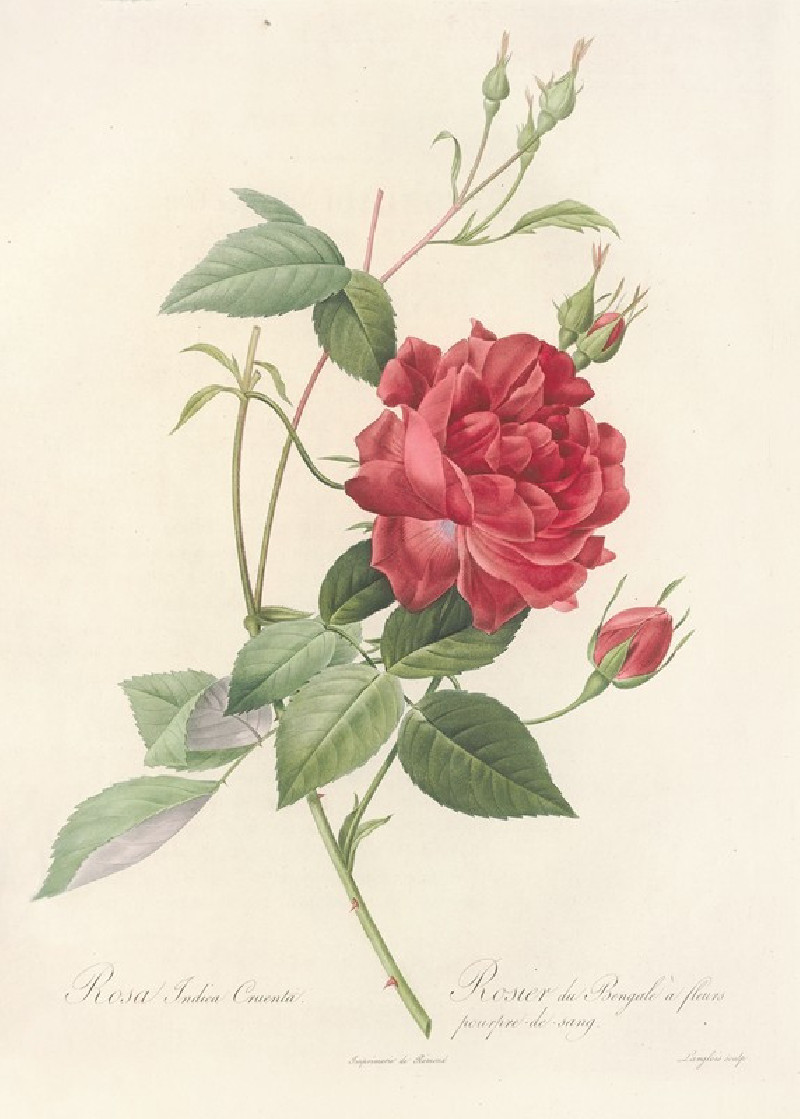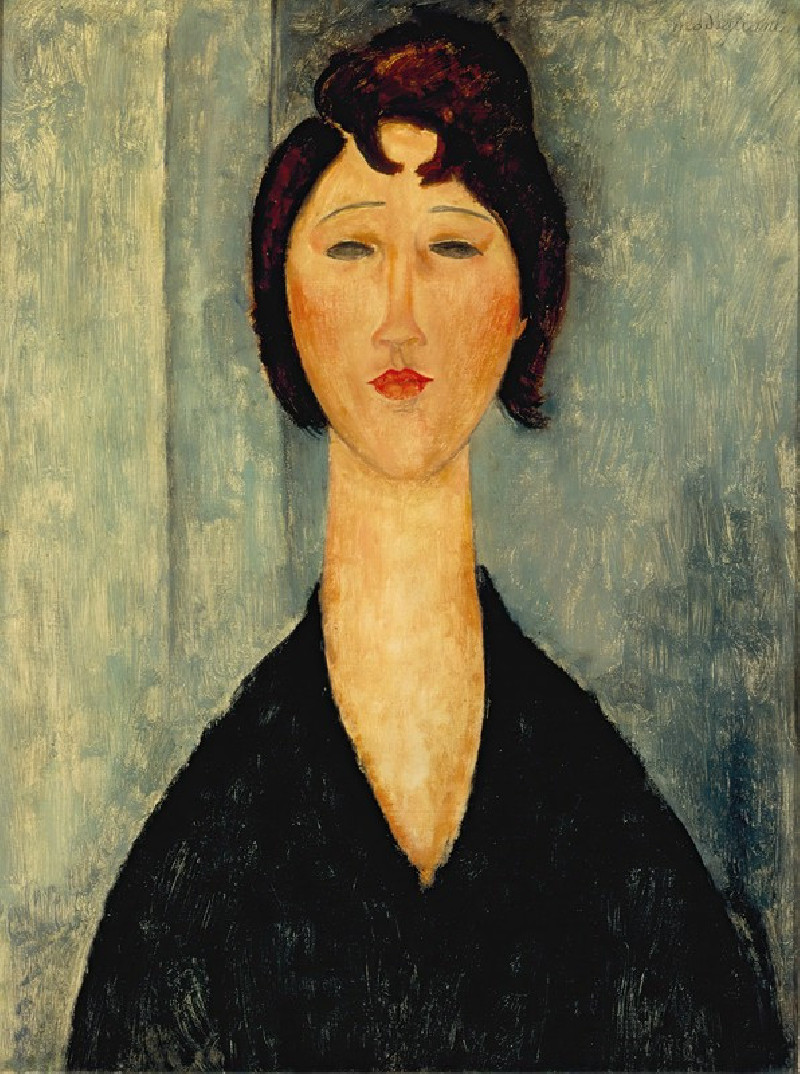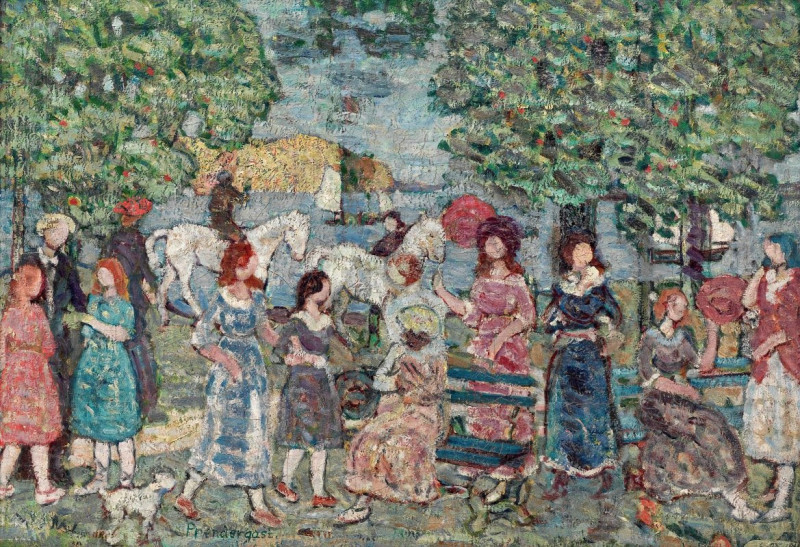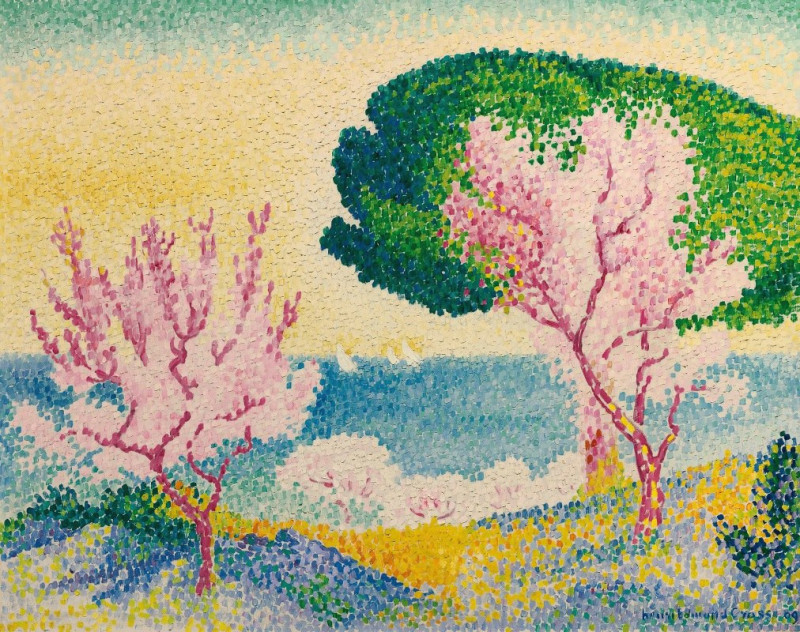The Black Rocks at Trouville (1865-1866)
Technique: Giclée quality print
Recommended by our customers
More about this artwork
Artist: Gustave CourbetDate: 1865-1866"The Black Rocks at Trouville" by Gustave Courbet stands as a bold exemplification of the artist’s fascination with natural landscapes and his mastery in rendering the interplay of light and texture. This evocative seascape captures a tranquil yet dynamic scene at Trouville, a locale on the Normandy coast renowned for its rugged beauty.In this painting, Courbet employs a rich palette to portray a transformative moment where land meets sea under a tumultuous sky. The foreground is dominated by clusters of dark, jagged rocks strewn across the sandy beach. These black rocks, rendered with thick, emphatic brushstrokes, anchor the composition and contrast starkly against the creamy white foam of the ocean’s tide and the soft, moist sand.Above, the sky is a whirl of moody cloud formations in shades of deep oranges and browns, suggesting either the onset of a storm or the retreat of one. This vibrant sky casts a warm, diffuse light that seems to echo the transient nature of the scenery below.Courbet’s approach not only captures the visual essence of the Trouville coast but also invokes the intense emotional response such a place provokes in the observer. The painting invites viewers to reflect on the raw beauty and enduring power of nature, themes that are recurrent in Courbet’s work.
Delivery
Returns
Jean Désiré Gustave Courbet (10 June 1819 – 31 December 1877) was a French painter who led the Realism movement in 19th-century French painting. Committed to painting only what he could see, he rejected academic convention and the Romanticism of the previous generation of visual artists. His independence set an example that was important to later artists, such as the Impressionists and the Cubists. Courbet occupies an important place in 19th-century French painting as an innovator and as an artist willing to make bold social statements through his work.

